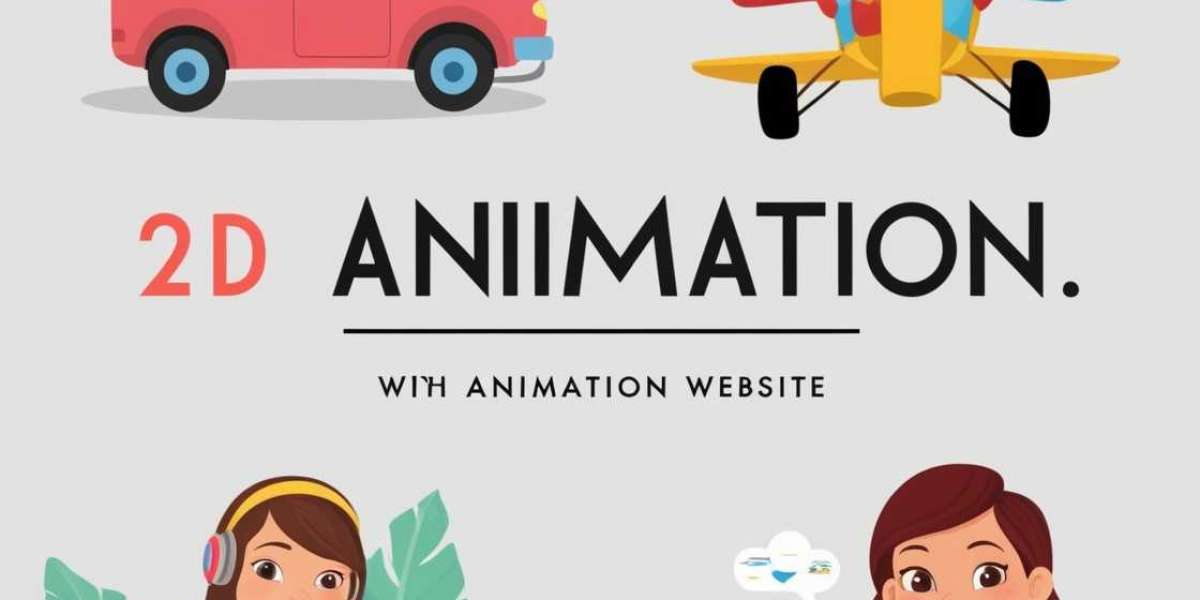The Golden Age: Character Animation in Full Color
The 1930s to the 1950s is often called the Golden Age of Animation. During this period, 2D animation gained sophistication, with full-color animations, synchronized sound, and vibrant characters. Disney and Warner Bros. dominated this era, producing iconic 2D cartoon characters such as Mickey Mouse, Bugs Bunny, and Daffy Duck. The appeal of these characters lay in their exaggerated expressions, lively actions, and relatable personalities, marking the development of 2D character animation.
Through advancements in color techniques and storytelling methods, animators were able to make their characters more relatable and expressive, helping audiences connect on a deeper level. By the 1960s, animation studios had expanded their creative horizons, experimenting with new styles and formats, from educational cartoons to television series.
From Traditional to Digital: The Transition of 2D Animation
The Influence of Technology on 2D Animation Techniques
The evolution of 2D animation took a significant leap forward in the 1980s and 1990s with the introduction of digital technology. Digital tools began to replace traditional hand-drawn techniques, making animation faster and more accessible. Software like Adobe Animate (formerly Flash) and Toon Boom allowed animators to create complex animations more efficiently. This digital transition had a profound impact on the industry:
- Faster Production: Animators could now produce more content in less time, lowering production costs and making 2D animation more accessible to smaller studios.
- Greater Consistency: Digital tools improved the consistency of animations, helping 2D animation companies create high-quality visuals across multiple episodes or series.
Incorporating digital tools also made it easier to add layers, effects, and sophisticated backgrounds, giving animators a broader creative palette.
Blending Dimensions: The Rise of 2D in 3D Animation
One of the most exciting developments in recent years has been the blending of 2D and 3D techniques. Known as 2D in 3D animation, this approach merges the aesthetics of 2D characters with the depth and realism of 3D environments. Pioneered by studios like DreamWorks and Pixar, this hybrid style offers new storytelling possibilities and visual experiences.
The use of 3D elements allows for complex camera movements, lighting effects, and perspectives, enhancing the depth and engagement of 2D character animation. This combination has broadened the scope of animation projects, enabling companies to deliver visually compelling stories that resonate with modern audiences.
2D Animation in the Digital Age: New Trends and Techniques
Explosive Growth in Online Content and Marketing
The digital age has given 2D animation a new lease on life, with increasing demand for online content and video marketing. Today, 2D animation service providers cater to businesses looking to create engaging explainer videos, promotional animations, and social media content. The simplicity and effectiveness of 2D animation make it ideal for conveying information quickly, making it a staple in modern digital marketing.
Companies now use 2D cartoon characters to create memorable brand identities, while educational and e-learning platforms rely on animations to simplify complex topics for students. These trends have kept 2D animation relevant in a world dominated by short-form, easily shareable content.
Software Advances and Automation
Advances in animation software have further streamlined the animation process, providing tools that reduce the need for manual frame-by-frame animation. Some modern software even includes automated lip-sync features, rigging, and physics-based movement. This makes 2D animation services more accessible and affordable, even for smaller projects and independent animators.
The availability of user-friendly animation software has democratized the industry, allowing aspiring animators to create professional-quality animations without the need for extensive studio resources. Consequently, we see a surge in animated content across platforms like YouTube, TikTok, and Instagram, often created by independent animators.
Key Elements of Contemporary 2D Animation Styles
Today, 2D animation spans a diverse range of styles and aesthetics. Modern audiences enjoy different forms of 2D animation, including:
- Minimalist Animation: Simple shapes, muted colors, and minimal backgrounds that focus on conveying ideas clearly.
- Retro and Vintage Styles: Drawing inspiration from the Golden Age of Animation, these styles evoke nostalgia with vintage color palettes and stylized characters.
- Flat Design: Popular in explainer videos and mobile apps, flat design uses simple, clean visuals to create appealing, easy-to-digest content.
- Hybrid Animation (2D in 3D Animation): Combining 2D characters with 3D backgrounds or effects, adding depth while preserving a stylized look.
Each style serves different purposes and target audiences, allowing animators and studios to tailor their visuals according to the needs of a project.
The Role of 2D Animation Companies Today
With its ability to communicate ideas quickly and memorably, 2D animation has remained essential in branding, marketing, and entertainment. 2D animation companies have adapted their services to meet modern demands, offering a variety of styles and techniques to suit different industries.
Popular Services Offered by Animation Companies
- Explainer Videos: Simplifying complex products or services.
- Educational Content: Visual aids for e-learning platforms.
- Branding: Animated mascots or logos for unique brand representation.
- Entertainment: Series, short films, or online content.
With 2D animation continuing to evolve, these companies play a vital role in meeting the diverse needs of today’s digital landscape.
The Future of 2D Animation
As technology advances, the future of 2D animation looks bright. From virtual reality (VR) to augmented reality (AR), new technologies will likely integrate with traditional 2D techniques to create even more immersive experiences. Additionally, artificial intelligence (AI) may contribute to the development of tools that enhance the animation process, automating certain aspects and allowing animators to focus on creativity.
Another trend is the increasing use of interactive animation. This can be seen in apps and games where users directly influence animated characters. As audiences seek more interactive and engaging content, 2D animation has the potential to merge with gamification and other dynamic media.
Conclusion: How Has 2D Animation Evolved?
From early hand-drawn frames to advanced digital techniques and hybrid 2D in 3D animation, 2D animation has shown its ability to adapt to changing technologies and cultural shifts. Today’s animators have access to tools and techniques that were unimaginable to early pioneers, allowing them to create rich, vibrant visuals that captivate audiences worldwide.







